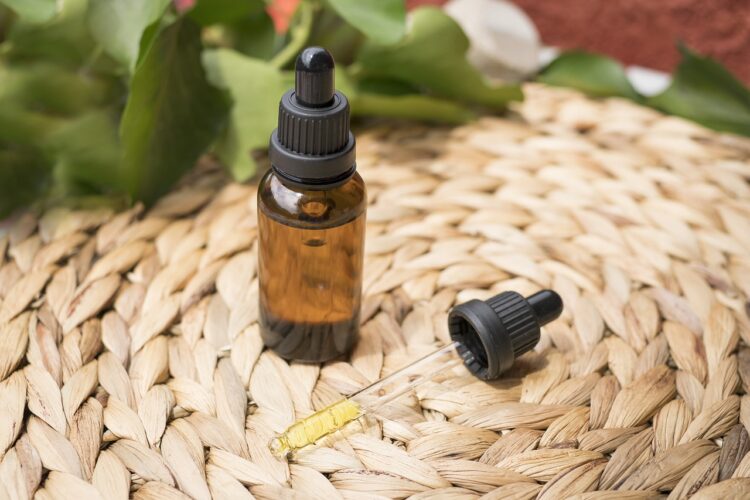The History of CBD: A Journey Through Time
Cannabidiol (CBD) is a chemical compound derived from the cannabis plant that has garnered widespread attention for its potential health benefits. From ancient medicinal uses to modern-day treatments, CBD has a rich history worth exploring.
The History of CBD: A Journey Through Time
Cannabidiol, more commonly known as CBD, is a chemical compound found in the cannabis plant. It has gained popularity recently due to its potential health benefits, including relief from anxiety, pain, and inflammation. While CBD is often associated with its psychoactive cousin THC, it does not produce the same psychoactive effects.
Ancient Medicinal Uses of Cannabis
The use of cannabis for medicinal purposes dates back thousands of years. In ancient China, India, and other parts of the world, cannabis was used to treat a wide range of ailments, including gout, malaria, and absent-mindedness. Ancient Chinese texts from around 2700 BCE mention cannabis as a remedy for various conditions, and in India, it was part of traditional Ayurvedic medicine.
Cannabis in the United States: Rise and Fall
In the United States, cannabis was widely used as a medicinal plant until the early 20th century. It appeared in the U.S. Pharmacopeia from 1850 to 1942, recommended for conditions such as labor pains, nausea, and rheumatism. However, it was banned in the 1930s due to its perceived negative effects and association with recreational drug use, leading to a significant decline in its medicinal use.
Discovery of Cannabinoids: The 1960s Breakthrough
It wasn’t until the 1960s that the specific chemical compounds in cannabis, known as cannabinoids, were identified and isolated. Delta-9-tetrahydrocannabinol (THC) was the first cannabinoid to be isolated, and it was quickly recognized for its psychoactive properties. However, it wasn’t until the 1980s that CBD was isolated, and its potential health benefits began to be studied extensively.
The Story of Charlotte Figi: A Turning Point
In the 1990s, a young girl named Charlotte Figi suffered from severe epilepsy and was having hundreds of seizures a week. Desperate for a solution, her parents turned to cannabis as a treatment option. They found that a strain of cannabis high in CBD and low in THC helped reduce the frequency and severity of Charlotte’s seizures. This strain, now known as Charlotte’s Web, has become popular for the treatment of epilepsy and other neurological disorders.
Modern-Day Uses of CBD
Since the discovery of CBD’s potential to treat epilepsy and other disorders, research into its potential health benefits has exploded. Today, CBD is used to treat a wide range of conditions, including anxiety, depression, chronic pain, and inflammation. It is also being studied for its potential to treat conditions such as addiction, cancer, and Alzheimer’s disease.
CBD is available in a variety of forms, including oils, tinctures, capsules, and topical creams. It can be taken orally or applied topically to the skin. It is also found in a variety of products, including edibles, drinks, and beauty products.
Legal Challenges and Research Opportunities
One of the main challenges in studying CBD’s potential health benefits is the legal status of cannabis. In the United States, cannabis is classified as a Schedule I controlled substance, making it difficult for researchers to study its effects. However, the passage of the 2018 Farm Bill legalized the cultivation of hemp, which is a strain of cannabis that contains less than 0.3% THC. This has opened up new opportunities for research into the potential health benefits of CBD.
The Future of CBD
Despite the growing interest in CBD, there is still much to learn about its safety and effectiveness. While early research suggests that it may have potential health benefits, more research is needed to fully understand its effects and potential risks. It is important to speak with a healthcare provider before starting any new treatment, especially if you are taking other medications.
Wrapping Up: A Promising Compound with a Rich History
CBD is a chemical compound found in the cannabis plant with potential health benefits. Its use for medicinal purposes dates back thousands of years, and it has gained popularity in recent years for its potential to treat a wide range of conditions. While more research is needed to fully understand its effects and potential risks, CBD is being used by many people as a natural treatment option.
FAQs
What is CBD? CBD, or cannabidiol, is a non-psychoactive compound found in the cannabis plant, known for its potential therapeutic benefits.
Is CBD legal? CBD derived from hemp (containing less than 0.3% THC) is legal in the United States under the 2018 Farm Bill, but its legal status can vary in other countries.
How is CBD used? CBD can be taken orally in forms such as oils, tinctures, capsules, and edibles, or applied topically through creams and lotions.
What conditions can CBD treat? CBD is used to treat a variety of conditions, including anxiety, depression, chronic pain, and inflammation. Research is ongoing for its use in treating epilepsy, cancer, and more.
Is CBD safe? While early research suggests CBD is generally safe, more studies are needed to understand its long-term effects and potential interactions with other medications.
Additional Resources
- What is CBD? Cannabidiol Explained: This article explains the basics of CBD, its sources, and its potential health benefits.
- What is the EndoCannabinoid System? A comprehensive guide to understanding how cannabinoids interact with your body.
- History of CBD: A detailed overview of the history and discovery of CBD.
- CBD History 101: Past, Present, and Future of CBD and Hemp: An in-depth look at the history of CBD and its evolving uses over time.







Leave Comment